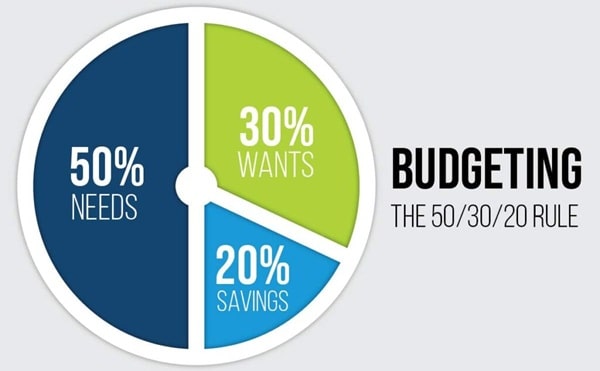Financial planning is not a one-time activity—it’s a lifelong journey that evolves as you grow older and your responsibilities increase. The financial decisions you make in your 20s, 30s, and 40s can shape your future security and overall peace of mind.
Whether you’re just starting your career or managing family responsibilities, setting age-appropriate financial goals is essential. Let’s look at the key financial goals you should aim for in each of these critical decades of life, tailored to the Indian context.

In Your 20s (Age 20–29): Lay the Foundation
Your 20s are the time to build strong financial habits. It’s the starting line of your financial journey—focus on discipline and learning.
1. Start Budgeting & Tracking Expenses
- Learn to manage your income.
- Use mobile apps or Excel to track where your money goes.
- Create a simple monthly budget (e.g., 50:30:20 rule).
2. Create an Emergency Fund
- Save at least 3–6 months’ worth of expenses.
- Keep it in a liquid mutual fund or savings account.
- Helps avoid debt during sudden job loss or medical emergencies.
3. Clear or Avoid Bad Debt
- Repay education loans (if any) on time.
- Avoid credit card debt and EMI traps for gadgets or vacations.
4. Start Investing Early
- Begin SIPs in mutual funds—even ₹500/month is enough to start.
- Use the power of compounding over time.
5. Get Term & Health Insurance
- Buy a basic term plan if you have dependents.
- Take a health insurance policy even if you’re covered by your employer—this protects you when you switch jobs.
6. Set Career and Skill Growth Goals
- Invest in courses or certifications.
- Better career = higher income = faster financial growth.
In Your 30s (Age 30–39): Build and Grow Wealth
Your 30s are when financial responsibilities increase—home loans, marriage, children, and family care. Focus on wealth building and security.
1. Buy a Health Insurance Plan for the Entire Family
- Include spouse, children, and parents if possible.
- Ensure ₹5–10 lakh coverage minimum due to rising medical costs.
2. Start Planning for Your Child’s Education
- Use SIPs, PPF, or Sukanya Samriddhi Yojana (for girl child).
- Set a specific amount based on future college fees.
3. Plan for Major Life Goals
- Down payment for home
- Car purchase
- Starting a business
- Family vacation fund
Create separate investment plans for each goal using mutual funds or recurring deposits.
4. Increase Your Emergency Fund
- Now your expenses are higher—aim for 6–9 months’ buffer.
5. Review and Upgrade Your Term Insurance
- Based on income, liabilities, and number of dependents.
- Ideally, coverage should be 10–15x your annual income.
6. Start Retirement Planning Seriously
- Begin investing in PPF, NPS, or long-term SIPs.
- The earlier you start, the smaller the monthly investment required to build a decent corpus.
In Your 40s (Age 40–49): Secure and Stabilise
Your 40s are the phase to consolidate and protect what you’ve built so far. Retirement is 15–20 years away—it’s time to boost your savings and reduce financial risks.
1. Accelerate Retirement Corpus Building
- Increase SIP amounts.
- Consider index funds or balanced mutual funds.
- Use retirement calculators to estimate how much you’ll need.
2. Pay Off Major Debts
- Aim to close home loans, car loans, or personal loans.
- Becoming debt-free gives peace of mind in later years.
3. Create a Will and Nomination for Assets
- Ensure your family knows about your investments, bank accounts, and insurance.
- Nominate beneficiaries for all financial instruments.
4. Diversify Investments
- Explore real estate, bonds, gold (SGB), and fixed deposits for safety.
- Maintain a balanced portfolio with moderate risk.
5. Secure Your Child’s Higher Education Fund
- If your child is nearing college age, shift funds from equity to safer assets like debt funds or FDs.
6. Review All Insurance Covers
- Ensure health cover is adequate (top-up policies if needed).
- Consider critical illness and accidental insurance.
Bonus Tips for All Age Groups
- Avoid lifestyle inflation: Increase savings as your income grows.
- Don’t rely only on fixed deposits: Diversify for better returns.
- Review financial plans yearly: Adjust goals as life changes.
- Stay away from Ponzi or “quick-rich” schemes: Focus on consistent, long-term returns.
Conclusion
Setting financial goals based on your age helps you make smarter money decisions and avoid unnecessary financial stress. Your 20s are for laying the foundation, your 30s are for building and protecting, and your 40s are for securing and preparing for retirement.
By being proactive and consistent, you can enjoy financial freedom and peace of mind—no matter what life throws at you.
Remember: It’s never too early—or too late—to plan your finances. The best time to start was yesterday. The second-best time is now.


